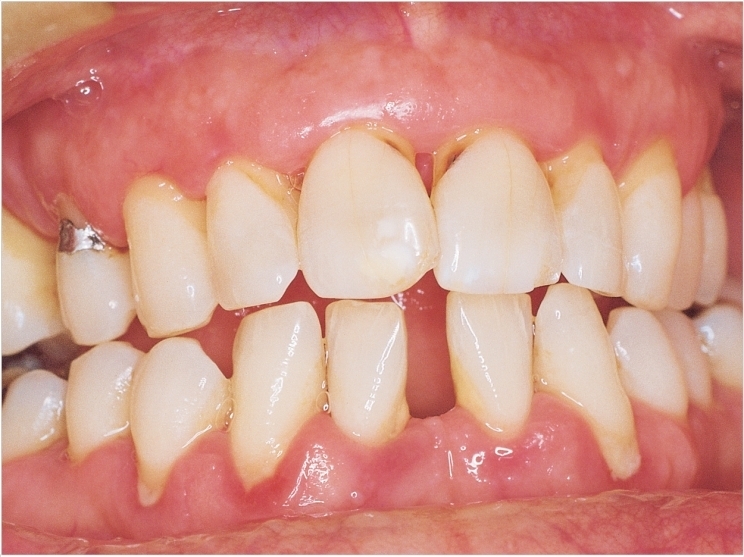
Researchers with the University at Buffalo (UB) Department of Oral Biology have received six grants totaling $6.6 million from the National Institute of Dental and Craniofacial Research to fund investigations into the bacteria behind periodontal disease, the influence of white blood cells on Sjögren’s syndrome, and the effects of a key protein on bone loss. The funding also will be used to develop the next generation of leaders in oral biology research.
“Years of investments in the department are bearing fruit,” said Frank A. Scannapieco, DMD, PhD, chair and professor of the Department of Oral Biology and associate dean for faculty and professional development in the UB School of Dental Medicine. “We have built a critical mass of high-quality people that are becoming successful or continuing to be successful. Ours is one of the most productive departments of oral biology in the country.”
For example, UB researchers recently discovered that the absence of tristetrapolin (TTP), a protein critical to the control of inflammation, leads to rapid and severe bone loss. One of the grants, a five-year award of $2 million, will be used to investigate how the protein affects the breakdown and reabsorption of bone with age.
While TTP plays a major role in regulating inflammation, its production slows with age. The researchers believe their work could have a profound impact on the management of bone health in the elderly, a population at higher risk of osteoporosis and periodontitis, which affects 70% of adults age 65 and older, reports the Centers for Disease Control and Prevention. Insights from the study also could aid in developing medication that elevates TTP levels.
Another five-year award for $1.9 million will be used to explore the role of oral spirochetes, a group of bacteria found in dental plaque, periodontal disease, inflammation, and other diseases. The research will examine how a protein released by the bacteria can impair neutrophils, prominent white blood cells of the immune system that serve as the body’s first responders after infection.
The pathogenic protein, called major outer sheath protein, disrupts the neutrophils’ signaling pathways, preventing the cells from migrating to bacterial infections and beginning the process of inflammation. The proteins play a key role in bacterial survival in periodontitis. A better understanding of the protein will help the researchers build therapeutic antibodies that prevent neutrophil disruption and improve oral health. The research also will survey proteins from comparable bacteria to determine if they function similarly.
Marked for five years and $1.5 million, the third award will fund the Buffalo Oral-Research and Specialty Training (BORST) Program, which provides stipend and tuition support to dentists interested in pursuing both clinical specialty and doctoral research training. By training future leaders in dentistry, UB says, the award will help address the critical need for well-trained investigators in dental, oral, and craniofacial research.
BORST scholars will complete clinical residencies in periodontology, oral pathology, or orthodontics. The program also will provide career development, mentorship, and research training opportunities in oral health, craniofacial biology, and bioengineering. Areas of research focus include immunology, oral pathogens and systematic disease, saliva, microbial pathogens, bone and tissue engineering, and clinical and translational research.
Next, while B cells are altered in patients with Sjögren’s syndrome, the precise way in which they affect the disease is not well understood. The fourth grant, for two years and $319,000, will aim to understand how B cells become activated in Sjögren’s syndrome and how an antibody called IgM that is secreted by B cells contributes to the disease. The researchers will examine IgM antibodies in the salivary glands of mice with Sjögren’s syndrome.
In Sjögren’s syndrome, the body’s white blood cells attack healthy cells that produce saliva and tears, placing the 1 million Americans who suffer from it at high risk of tooth decay and greater difficulties in talking and swallowing food. Meanwhile, IgM functions as the body’s garbage man, helping to clean up cellular debris and reduce inflammation before a stronger autoimmune response is triggered.
The IgM previously found in the salivary glands of mice with Sjögren’s syndrome had distinctive characteristics making it more reactive to its body’s own cells. By testing how IgM affects salivary function in mice, the researchers aim to learn whether the antibody’s presence in these glands is helpful and if it could aid in the development of medicine and other treatment.
In a separate two-year, $431,000 grant, researchers will examine B cell activation in Sjögren’s syndrome. Bacteria and viruses typically activate B cells. Molecules produced by tissue damage also drive B cell activation, though this has not been studied in Sjögren’s syndrome.
The researchers will investigate if B cells from patients with Sjögren’s syndrome are hyper-responsive to these molecules. The research may lay the groundwork for potential therapeutics targeting B cell activation through the damage-associated molecules, diminishing autoantibody production in Sjögren’s syndrome patients.
Finally, the university received a two-year grant for $479,000 to study the differences in immune system responses to periodontal pathogens between men and women. The research will examine the effect of MKP-1, an enzyme that limits immune responses, on cytokines and chemokines, which are proteins released by the immune system that promote inflammation.
The researchers also will determine if DUSP1, the gene behind the enzyme, is silenced in periodontal disease tissue. Understanding how these proteins are targeted may allow scientists to modify their expression for therapeutic benefits and create new possibilities for personalized treatment of periodontal disease.
Related Articles
Th17 Cells Drive Bone Loss in Periodontitis
Tooth Loss May Indicate Malnutrition in Older Adults
Gum Disease Treatment May Improve Diabetes Symptoms











